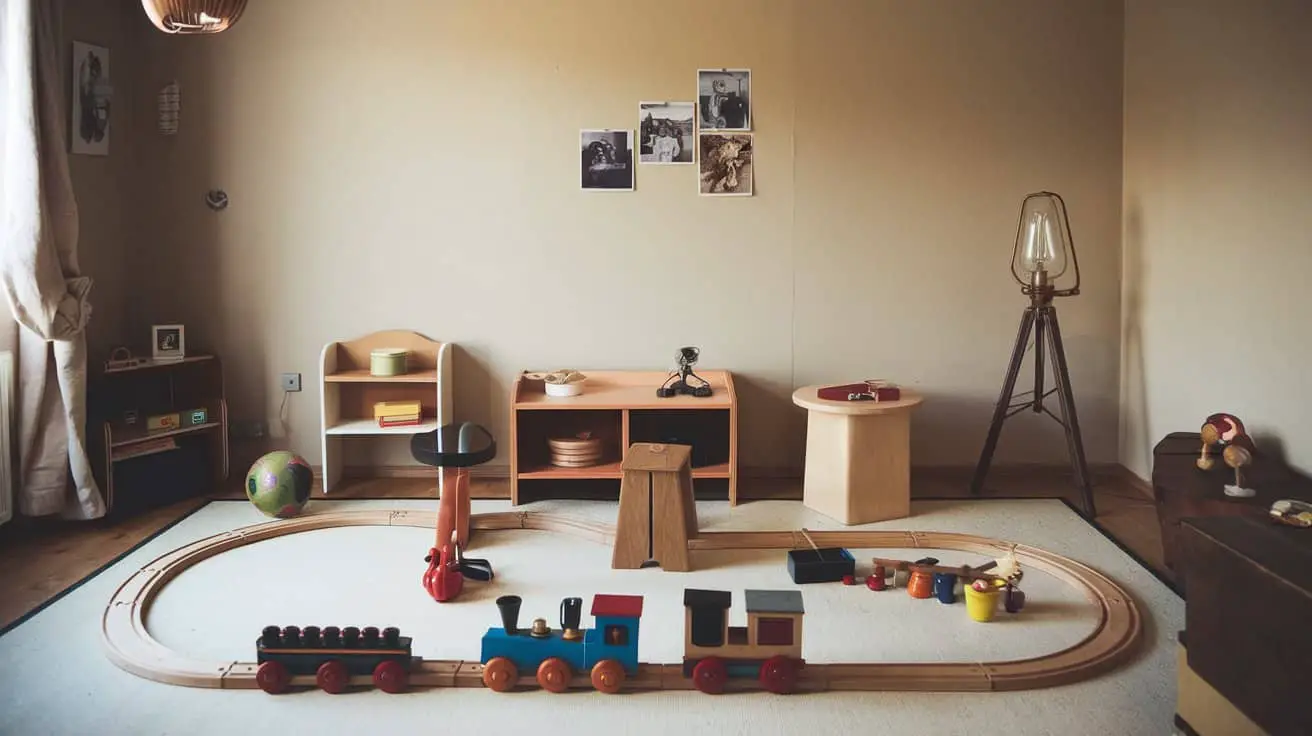
Okay, let’s be honest—when your home is already packed with laundry baskets, dog toys, and that mysterious pile of things that lives under the dining table, the idea of carving out a “playroom” can sound laughable. But guess what? You don’t need a whole room. Just a clever corner, a little planning, and the right vibe.
This guide is for families like mine—where the living room is also the train station, the snack hub, and sometimes, a dance floor. Let’s walk through how to design a small play area in the living room that’s cute, clutter-proof, and totally functional.
1. Pick a Corner That’s Already “Theirs”
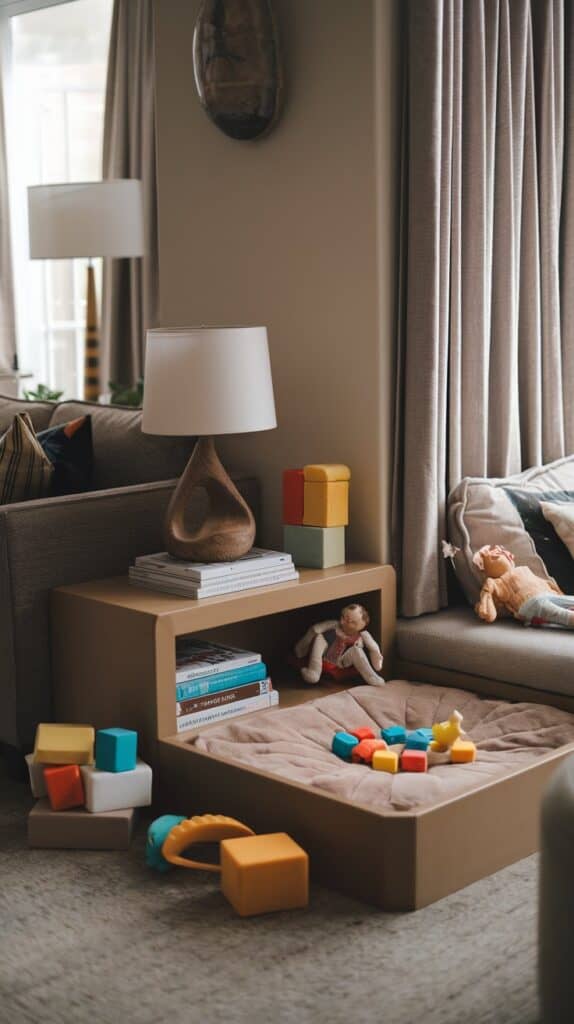
You know that spot where the toys already migrate to? That’s your starting point. Instead of fighting it, design around it. A small play area in the living room works best when it feels like an extension of your home—not a random mess of foam blocks and doll heads.
Use a corner near natural light if you can. Add a low shelf or cubby unit for toy rotation, and maybe a soft rug to visually “zone” the space. Bonus if you can match the rug to your sofa or curtains—then it looks less like a preschool and more like a stylish nook.
Try this: Match storage bins to your sofa throw pillows for easy blending. Nobody needs to know they’re full of dinosaurs and glitter glue.
2. Make Storage Do Double Duty
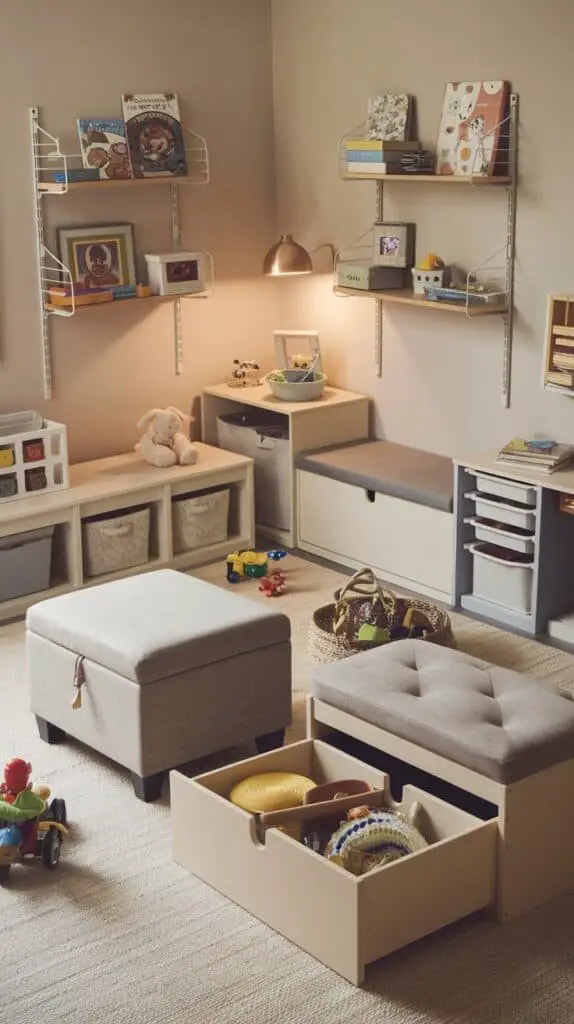
If there’s one secret to a functional playroom, it’s hidden storage. Ottomans, benches, and side tables with compartments are your best friends. Even a simple toy chest can double as a reading bench or coffee table with a soft cushion on top.
This isn’t about hiding everything (we want kids to play, after all). It’s about creating a flow that works for real life. Use baskets for daily toys, higher shelves for quieter ones, and rotate what’s visible so it always feels new.
Quick tip: For tiny playroom ideas, think up. Wall-mounted racks for books, pegboards for dress-up items, and magnetic strips for toy cars all save floor space and look cute.
3. Choose Toys That Look Good Out in the Open
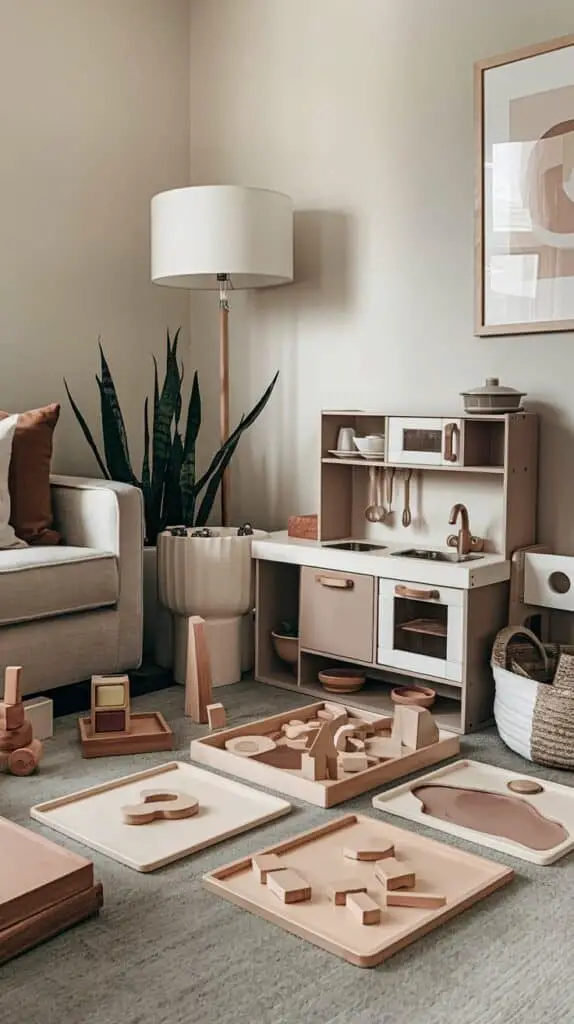
Let’s face it—some toys are just… hideous. But others? Wooden puzzles, neutral-colored blocks, mini play kitchens with muted tones? Those are playroom gold.
When you’re blending a small playroom design into your main living space, it helps to choose toys that don’t shout in neon. Look for soft pastels, wood textures, or even thrifted finds with a bit of charm.
Also helpful: Rotate loud toys to a box in the closet and keep “quiet play” items in the living room zone—think books, stacking toys, and plushies.
4. Keep the Layout Flexible
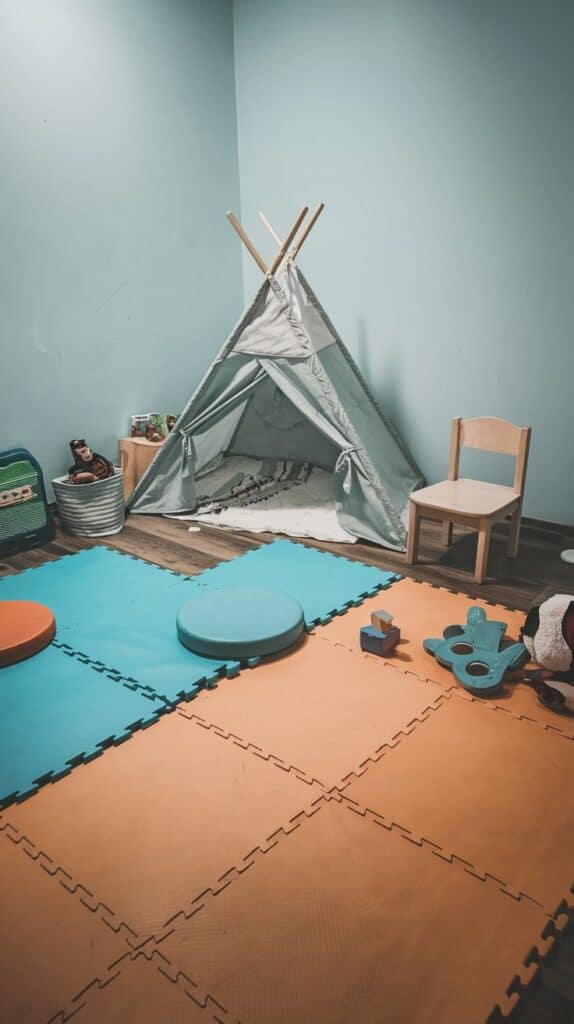
You don’t need a full-blown layout plan like it’s a kitchen remodel, but it helps to think in zones. A toddler playroom idea for small spaces might have just three things: a place to sit, a spot to build, and a soft zone to roll around.
Arrange the area so it doesn’t block your usual living room walkways. Modular pieces (like stackable stools or foldable mats) help the space adapt as your kids grow or as your living room needs change.
Family hack: A soft foam mat under a play tent = instant reading nook. Later, take down the tent and it’s a yoga mat or puzzle zone. Multi-use wins.
5. Add Personal Touches That Match Your Style
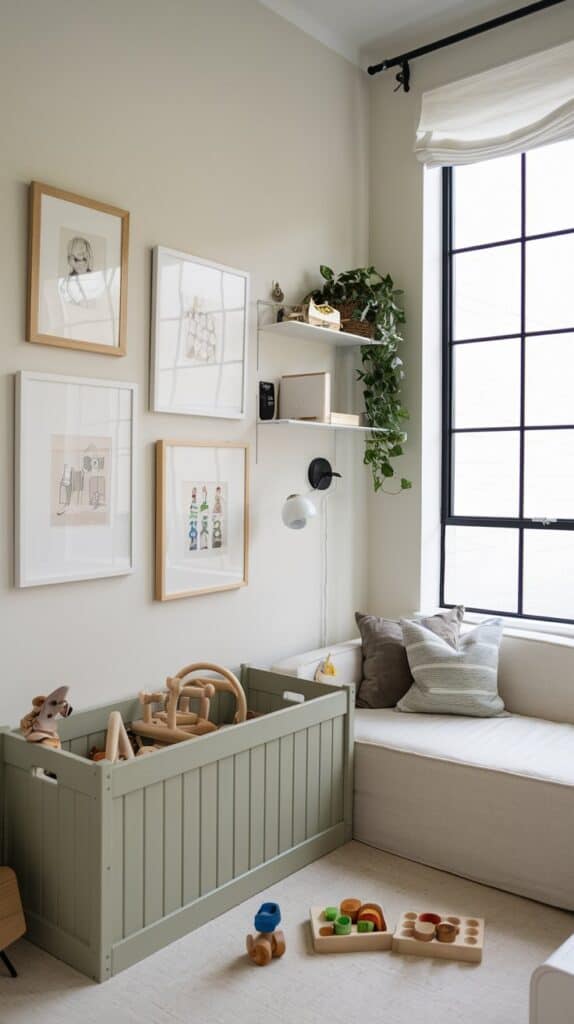
This is your home, not a preschool catalogue. So yes, you can make a play area feel like a natural part of your aesthetic. Hang their artwork in frames that match your gallery wall. Paint their toy bin in your favourite muted green. Even those alphabet posters come in minimalist styles now!
This is especially important for small playroom ideas in apartments or open-plan homes—you want the space to feel playful but not chaotic.
Idea to steal: A photo shelf with framed drawings and a few wooden toys makes a sweet (and stylish) mini-display above the toy area.
Final Thoughts
Whether you’re squeezing a mini playground into a one-bedroom apartment or turning a living room corner into a cozy play zone, it can be beautiful, functional, and family-friendly. You don’t need tons of space—just smart layout ideas, a little creativity, and a few clever bins.
Honestly, some of the best DIY playroom ideas happen in the smallest spots. So embrace the chaos (just a little) and let your living room become part grown-up hangout, part tiny wonderland.
